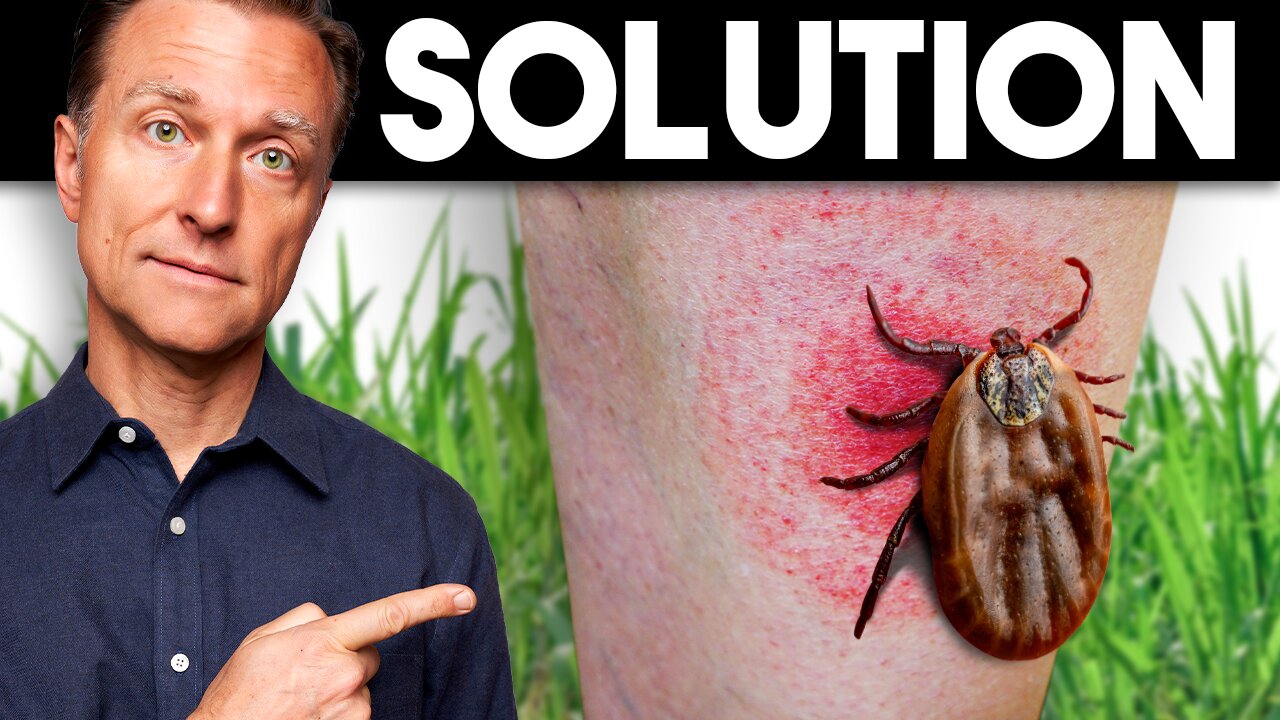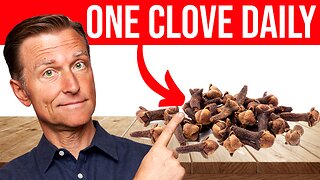Premium Only Content

The Top Nutrient Deficiency in Lyme Disease
You can try conventional and holistic remedies for Lyme disease, but without this nutrient, you may have trouble recovering 100%. Find out about the #1 nutrient deficiency associated with Lyme disease.
DATA:
https://www.ncbi.nlm.nih.gov/pmc/articles/PMC4160567/
0:00 Introduction: #1 Nutrient deficiency involved in Lyme disease
0:26 Why vitamin D?
1:37 Understanding vitamin D receptors
4:07 Barriers to vitamin D absorption
4:44 How to increase vitamin D
In this video, we’re going to talk about the top nutrient deficiency in Lyme disease, vitamin D. The spirochete microbe involved in Lyme disease blocks your ability to receive vitamin D. This means you could have normal vitamin D levels in your blood but be severely deficient deep in your tissues.
Vitamin D typically comes from the sun and is absorbed into the liver and kidneys through your skin. It’s eventually turned into the active form of vitamin D but has to be received by a vitamin D receptor.
The spirochete microbe in Lyme disease downgrades your vitamin D receptors by 50 to 80x! This inhibits your immune system’s ability to fight the microbe.
Other microbes, viruses, and certain types of cancer also downgrade vitamin D receptors. If you have a problem with your vitamin D receptors, it won’t be detected in your blood. You must do a specialized vitamin D receptor test to identify the problem.
It’s estimated that 30% of the population has issues with the vitamin D receptor. Many people who are overweight have resistance to vitamin D at the receptor level. Other microorganisms like chlamydia, microplasmas, and aspergillus (toxic mold) downgrade vitamin D receptors.
The following factors can make it more difficult for your body to absorb vitamin D: darker complexions, old age, low cholesterol, seed oil consumption, and smoking. You also need adequate zinc and magnesium for vitamin D to work properly in the body.
Natural alternatives to increase vitamin D levels and combat vitamin D resistance include:
1. Large amounts of vitamin D, 50,000 IU sporadically (i.e., once a week)
2. Sunshine
3. Omega-3 fatty acids
4. Resveratrol
5. Intense exercise
6. Quercetin
7. Zinc
8. Boron
9. Progesterone
10. Sulforaphane
11. TUDCA
Dr. Eric Berg DC Bio:
Dr. Berg, age 59, is a chiropractor who specializes in Healthy Ketosis & Intermittent Fasting. He is the author of the best-selling book "The Healthy Keto Plan" and is the Director of Dr. Berg Nutritionals. He no longer practices, but focuses on health education through social media.
Follow Me On Social Media:
Facebook: https://bit.ly/FB-DrBerg
Instagram: https://bit.ly/IG-DrBerg
Listen to my Podcast: https://bit.ly/drberg-podcast
TikTok: https://bit.ly/TikTok-DrBerg
Disclaimer:
Dr. Eric Berg received his Doctor of Chiropractic degree from Palmer College of Chiropractic in 1988. His use of “doctor” or “Dr.” in relation to himself solely refers to that degree. Dr. Berg is a licensed chiropractor in Virginia, California, and Louisiana, but he no longer practices chiropractic in any state and does not see patients so he can focus on educating people as a full-time activity, yet he maintains an active license. This video is for general informational purposes only. It should not be used to self-diagnose and it is not a substitute for a medical exam, cure, treatment, diagnosis, prescription, or recommendation. It does not create a doctor-patient relationship between Dr. Berg and you. You should not make any change in your health regimen or diet before first consulting a physician and obtaining a medical exam, diagnosis, and recommendation. Always seek the advice of a physician or other qualified health provider with any questions you may have regarding a medical condition.
#keto #ketodiet #weightloss #ketolifestyle
Thanks for watching! I hope this increases your awareness about the importance of vitamin D. I’ll see you in the next video.
-
 5:42
5:42
Dr. Eric Berg
19 hours agoWhat Would Happen If You Chewed ONE Clove Daily
3.71K8 -
 29:53
29:53
MYLUNCHBREAK CHANNEL PAGE
1 day agoUnder The Necropolis - Pt 1
127K45 -
 2:00:10
2:00:10
Bare Knuckle Fighting Championship
3 days agoCountdown to BKFC on DAZN HOLLYWOOD & FREE LIVE FIGHTS!
49.5K3 -
 2:53:01
2:53:01
Jewels Jones Live ®
1 day agoA MAGA-NIFICENT YEAR | A Political Rendezvous - Ep. 103
129K32 -
 29:54
29:54
Michael Franzese
15 hours agoCan Trump accomplish everything he promised? Piers Morgan Article Breakdown
122K53 -
 2:08:19
2:08:19
Tactical Advisor
19 hours agoThe Vault Room Podcast 006 | Farwell 2024 New Plans for 2025
190K11 -
 34:12
34:12
inspirePlay
1 day ago $5.73 earned🏆 The Grid Championship 2024 – Cass Meyer vs. Kelly Rudney | Epic Battle for Long Drive Glory!
89.9K8 -
 17:50
17:50
BlackDiamondGunsandGear
16 hours ago $3.11 earnedTeach Me How to Build an AR-15
63.9K6 -
 9:11
9:11
Space Ice
1 day agoFatman - Greatest Santa Claus Fighting Hitmen Movie Of Mel Gibson's Career - Best Movie Ever
121K48 -
 42:38
42:38
Brewzle
1 day agoI Spent Too Much Money Bourbon Hunting In Kentucky
82.2K13